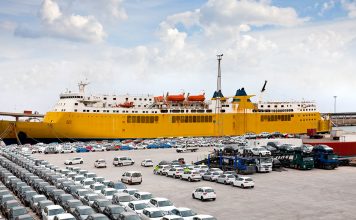The significance of manufacturing to any economy globally cannot be understated. Many economic development success stories such as China, Malaysia, Japan, US and South Korea owe a great deal to the growth of their local manufacturing sector ranging from electronics to vehicles and machinery.
The same idea was mooted in the 1970s by the Government with the aim of growing Kenya’s manufacturing sector as a means of creating jobs.Through public-private-partnership agreements, vehicle assembly plants were set up shortly after independence.
This initiative attracted investors who set up factories with enough capacity to satisfy local and regional demand.
The upswing of this was creation of employment, technology transfer and contribution to the gross domestic product. Another win for the economy was the direct injection of cash and creation of additional employment for local suppliers of parts and accessories to the assembly plants.
Unfortunately, Kenya’s supportive environment for local assemblers was reduced in the 1990s with the introduction of imported used vehicles.
Current official data shows that Kenya imports an average of 7,600 second-hand vehicles per month, with the average number of assembled units standing at about 430. Needless to say, the country’s manufacturing potential has been adversely affected in favour of imported used goods.
This has continuously undermined growth in the automotive and other sectors, inhibiting the intended impact to the economy.
In addition, this state of affairs negatively affects the spirit and intention of placing manufacturing as one of the drivers of the Government’s Big Four Agenda. Notably, the State introduced the National Automotive Policy.
The policy is designed to support the growth and transformation of the automotive industry in Kenya into a significant contributor to the national GDP under manufacturing by 2023.
The policy also aims to drive employment generation and skills development. Statistics from other countries show that local assemblies create more formal jobs on average compared to vehicle import trades, thereby increasing employment opportunities ten-fold across the industry value chains.
Bringing this home means that the 3,000 people currently employed on assembly lines have a multiplier of 3,960 jobs in downstream sector, as well as over 5,000 jobs in support sectors to downstream automotive sector.Any additional production triggers more jobs and more job spin-offs.
At 100 per cent current installed capacity of the existing assemblers, a total of 79,635 jobs can be created by commercial vehicle assembly alone.If we add locally assembled passenger car segment, if protected, it has the potential of creating over 77,000 jobs in the country.
We believe that with the Automotive Policy in place bringing around the right investment environment, the industry has the capacity to create over 150,000 jobs in Kenya directly and indirectly.The International Organisation of Motor Vehicle Manufacturers research showed that each direct auto job supports at least another five indirect jobs.
Citing tangible examples, a report by the Centre for Automotive Research in the US noted that excluding executives, researchers, engineers, managers, support staff, and the like, factory worker jobs multiplier is about 11. That is to say, for every job on an automobile or light-truck assembly line, ten additional jobs are created or supported in the economy.
A real-life example can be drawn from local vehicle manufacturing and assembly in the US.Counting employees directly working for car manufacturers in, parts suppliers and car dealers is 1.55 million people.
The secondary, or intermediate, jobs total – those employees that are working at companies that support manufacturers, parts suppliers, and dealers – is another 2.3 million.
Direct jobs
The spin-off jobs created by direct and intermediate workers spending their paychecks is another 3.3 million jobs. A total workforce of 7.15 million citizens will be employed by local vehicle manufacturing and assembly.
Other great examples across the globe and in Africa include Thailand whose auto industry employs more than 500,000 people. In Egypt, it has created 86,000 direct and indirect jobs. In South Africa, the industry provides more than 450,000 jobs directly and indirectly.
The numbers have demonstrated time and again that globally, the automotive industry has been a pillar of industrialisation of many economies and a key driver of macroeconomic growth and technological advancement.
The industry has consistently contributed heavily directly and indirectly to the GDP, foreign investment, employment and innovation in developed countries such as Germany, US, Japan, South Korea, Italy and China.
When we assemble vehicles locally, we create formal, quality and meaningful jobs where employees can afford to pay taxes and technology transfer. -Adil Popat, Simba Corp Executive Chairman, Rita Kavashe, Isuzu East Africa Managing Director and Dennis Awori, Toyota Kenya Chairman are board members of the Kenya Vehicle Manufacturers Association.
SOURCE: standardmedia.co.ke







![Top 20 Used Cars to Avoid Buying in Kenya – [PHOTOS]](../../../blog/wp-content/uploads/2013/11/top-used-unreliable-cars-to-avoid2-80x60.jpg)


![Here are some of the best tuned cars in kenya by state of the art garages [PHOTOS]](../../../blog/wp-content/uploads/2013/11/29402_10151301757042065_340470732_n-e1384498044289.jpg)

![Top 20 Used Cars to Avoid Buying in Kenya – [PHOTOS]](../../../blog/wp-content/uploads/2013/11/top-used-unreliable-cars-to-avoid2-100x70.jpg)





